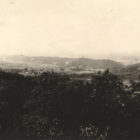Wills Valley Alabama
WILLS VALLEY
The double valley separating Raccoon Mountain, on the northwest, from Lookout and Chandler Mountains, on the southeast. It consists of two parts—one called Big Wills Valley, which is much the larger and includes all the valley drained by Big Wills Creek; the other called Little Wills Valley, being that part between East Red Mountain and Lookout Mountain, drained by Little Wills Creek.
Together the valleys extend from the Georgia line southwestward through DeKalb and Etowah Counties for a distance of about 70 miles, and have an average width of nearly 5 miles, making their combined area approximately 350 square miles. The central portion of Wills Valley is composed of al. Its geological formations are the lower Silurian, Pelham (Trenton) limestones and siliceous (Knox) dolomite and chert; the Devonian black shale; the lower Subcarboniferous, Fort Payne chert; and the upper Subcarboniferous, Bangor limestones and Hartselle sandstones.
The principal farm lands of the valley are along Big and Little Wills Creeks. Besides red iron ore there are pottery and fire-brick clays, building stones, both limestone and sandstone, and numerous mineral springs. Alabama White Sulphur Springs, a popular summer resort, is in the valley, situated in a gap of West Red Mountain.
Wills Valley is associated with some of the earliest historical events in northern Alabama. Will’s Town, a famous Indian trading post, named for Red-Headed Will, a half-breed Cherokee chief, was founded about 1770 on Big Wills Creek, just above the present village of Lebanon, and was a place of importance in Cherokee history. Here Col. Alexander Campbell, British Agent for the Cherokees, resided before and during the Revolution. One of the earliest railroads projected in the State traversed practically the entire length of the valley. It was called the North-east & South-west Railroad, and was the nucleus of the Alabama & Chattanooga Railway, now a part of the Alabama Great Southern.
References.—McCalley, Valley regions of Alabama, pt. 1, Coosa Valley (Geol. Survey of Ala., Special report 9, 1897), pp. 9-10, 29, 115; Alabama History Commission, Report (1901), vol. 1, p. 420; Pickett, History of Alabama, (Owen’s ed., 1900), pp. 146, 415, 436.
